SES-10 Satellite Overview
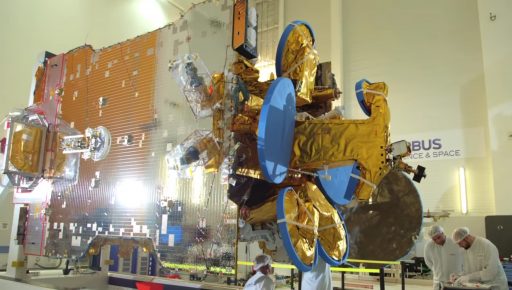
SES-10 is a commercial communications satellite operated by SES, Luxembourg as part of the company’s satellite fleet. Its launch on a SpaceX Falcon 9 rocket will be the first time a previously flown first stage is employed to lift a payload into orbit.
SES is one of the largest telecommunications providers in the world, operating over 40 satellites in Geostationary Orbit to deliver the full spectrum of communications services to a global user base. The company’s SES World Skies division ordered the satellite from Airbus Defence and Space in February 2014 to expand its services in Latin America and the Caribbean with focus on direct-to-home broadcasting, enterprise services and broadband connectivity.
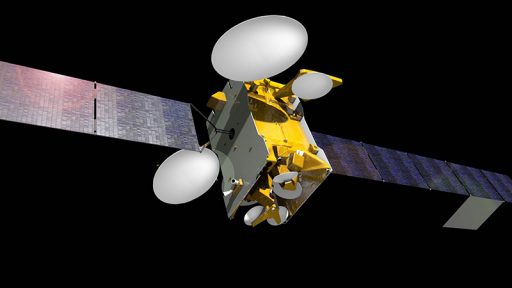
Based on the flight-proven Eurostar E3000 satellite platform, SES-10 hosts a powerful payload of 50 high-power Ku-Band transponders. The satellite’s coverage zone stretches over Mexico, Central America, South America as well as the Caribbean.
SES-10 is planned to operate from an orbital position of 67° West, replacing the AMC-3 and 4 satellites launched in 1997 and 1999, having already surpassed their expected service lives. The satellite expands AMC-3/4 coverage and ensures a continuation of services to key customers in the Americas that SES has been serving since 2010.
The 67° West position was made available by the Andean Community (Bolivia, Colombia, Ecuador and Peru) in an agreement with SES which provides a specifically designed communications beam over the Andean Community with an optimal elevation angle to be used by local telecommunications operators, broadcasters and service providers.
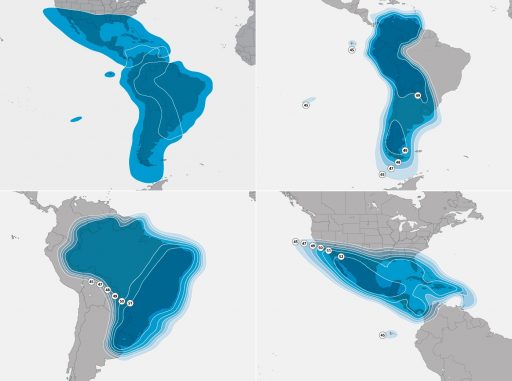
The satellite’s capacity will be provided in four coverage zones: the Andean beam, a beam covering Mexico, Central America and the Caribbean, the second beam covers Hispanic South America and the third coverage zone is focused on Brazil. SES-10 can be configured to deliver connectivity to support off-shore oil and gas exploration.
SES-10 hosts Flexible Command Receivers with adjustable frequency settings to create more robust command link operations from the ground to the satellite.
SES selected SpaceX as launch services provider for the 5,300-Kilogram SES-10 satellite in February 2014. At the time, there was some confusion as to whether Falcon 9 would have sufficient performance to lift the satellite into a nominal Geostationary Transfer Orbit as SpaceX had given the GTO performance of the F9 Full Thrust Version at 4,850kg. However, this was a conservative performance estimate of the upgraded Falcon 9 and SpaceX upped the numbers to 5,500kg to GTO for missions with core stage recovery.
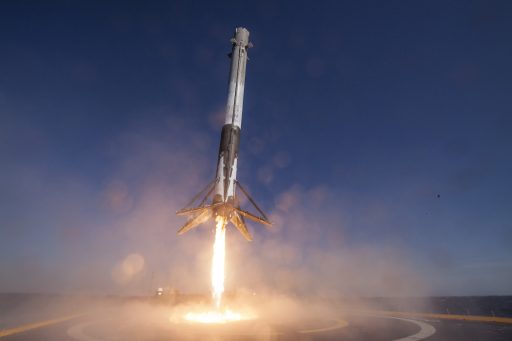
In August 2016, SES committed to become the first customer to fly on a Falcon 9 with a previously used booster. SES had been a supporter of SpaceX and the company’s re-use aspirations and signed up for the first re-use mission which earned them a small discount of around 10% on the already competitive price of Falcon 9. The SES-10 booster flew its first mission in April 2016 with the Dragon SpX-8 spacecraft and became the first to successfully land atop SpaceX’s sea-going Autonomous Spaceport Drone Ship.
SES-10 is the tenth SES satellite ordered from Airbus Defence and Space and also the tenth in the Eurostar Series to feature an electric propulsion system. In fact, SES-10 employs a hybrid propulsion system comprising chemical thrusters for the initial climb toward geostationary orbit & assistance in stationkeeping while the electric propulsion system is used for station acquisition and stationkeeping. The satellite has been built for a service life of at least 15 years, though the satellite’s life can be prolonged through use of the electrical propulsion system whenever possible.
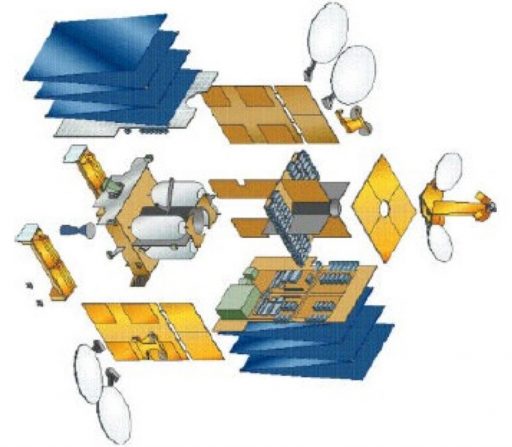
The E3000 satellite platform is capable of hosting communications payloads with a total power exceeding 16,000 Watts. The spacecraft platform can support a high degree of customization to be able to support a variety of payloads including commercial communications and military payload packages. Eurostar-3000 made its first launch in 2004.
The satellite platform consists of a central cylinder which facilitates the propellant tanks for the bi-propellant propulsion system. The cylinder consists of several segments connected via ring-joints. Internal composite panels are mounted to the cylinder to facilitate the external panels and provide mounting platforms for the various satellite components.
Two deployable solar arrays are used for power generation featuring triple-junction Gallium-Arsenide solar cells. Power is stored in onboard batteries while a Power Conditioning and Distribution Unit regulates the satellite’s power bus and controls the state of charge of the batteries. SES-10 will generate a total power of 13 Kilowatts at the end of its mission.
A dedicated bi-propellant propulsion system will be used for apogee maneuvers and stationkeeping maneuvers in Geostationary Orbit, assisted by electric propulsion via Hall-effect thrusters provided by Airbus Safran Launchers. Eurostar-3000 is three-axis stabilized featuring a state of the art navigation system. The satellite provides precise Earth-pointing capabilities and stationkeeping accuracy is +/-0.05 degrees.
